Last week, I taught a class on painting at the Norman Rockwell Museum. It was the third time I’ve held a workshop there and it was a full class at eighteen painters. It was a bit difficult for everyone to see the model, but we adjusted well enough.
We loosened up the first day working quickly from the live model, and then, in order to give the entire class the full advantage of working from the same angle, I photographed her in a new pose, and projected it. Everyone worked from this new angle so that we could all talk about the same points of concern.
That may just be the first time anyone’s ever done that. The students needed to get beyond the stigma associated with using photographs. I wanted them to compare working from life and working with an edited photo. The model returned the second day and we worked from both. The Rockwell even provided color and b/w prints of the pose. This way, we worked with whatever it took to learn and get a good painting on the surface.
When I was hired for my first studio job, I refused to use any kind of projection, any kind of tracing whatsoever. Then as I watched the hours tick away while my other better, faster colleagues were covering far richer ground, I decided to use it. But I promised myself to learn from it. I would master it and use it to inform my skills.
I found it a fascinating teacher.
1. Memorize
First off, I used tracing to learn anatomy. By tracing, I could actually feel how an arm foreshortened. I could see what length the line was that was needed to foreshorten it. I could understand how eyes, noses, hands looked at difficult angles.
I used it to train my drawing skills and improve them. No, it didn’t happen right away. Like anything else, it took time. Yet I sped up, my drawings improved, and I began to keep up with the guys around me who chuckled to themselves at my naivete.
In life drawing classes we work from the model, sitting before us. But what happens when they’re not there? What most art schools fail to tell you is that you’re supposed to be memorizing. Memorize anatomy? What kind of alchemy is this? Most instructors think you learn anatomy by simply drawing the model. Uh huh.
2. Draw, don’t trace.
When I draw, I remember that using the point of the pencil is boring if all the line weight is the same. Same for tracing. I use the side of the lead, roll it, angle it, vary it for shadow lines, hair, folds, trees, etc. I get different line weight by varying the pressure on the pencil. Ultimately, you’re doing a drawing. SO DRAW.
3. Edit detail.
Forget about tracing every little subtle light shift, or shadow, every tree branch or eyelash. Forget about drawing every strand of hair. Draw for shape, draw for tone. Generalize the reference for the most part. It’s a guide.
4. It’s a guide.
When you trace under something like an Artograph, drive yourself to get good enough to draw with it. It’s not about tracing the image exactly. It’s about using the image as a guide to correct proportions and delineate shadows, depth, line, and contrast. Give it your own technique, otherwise your work looks lifeless, pedestrian, lame. It’ll look like you traced it. Exaggerate. Use fluid lines. Any ol’ goof can follow lines. Draw with it.
5. Use your own photography.
Shoot what you need. Best that way. The internet is full of pictures you need for reference, but I use them only as reference to draw from. I still need to make the sketch my own. Whenever you can, buy the reference you need. Better for everyone that way.
6. Distortion Happens.
No photograph records life exactly. Photos adjust the image from three dimensions to two. It’s already distorted. But you have to know when it’s telling you a lie about reality. Do not believe that photographs are real or telling you about reality. They do not. You must learn to recognize when they do and don’t and be able to compensate. Besides, it’s a GUIDE.
7. Perfect the composition.
First, I design the composition with thumbnails. Then I use reference to draw separate elements of a complex composition on separate slips of tracing paper. I move the sheets around until the composition is refined, perfected. It’s a composition guide. Artists have been using this since the Dawn of Illustration. Today, you’ll likely do this by cutting and pasting the reference together on the computer. It’s the same thing.
8. Use it sparingly.
As I trained with tracing, I used it less and less. It instantly improved my drawing skills, especially drawing from my head. It improved my memorization skills, but I had to focus on it. The next time you draw from life, you’ll understand what you learned from tracing. The next time you trace, you’ll understand more from your life drawing. Back and forth, back and forth. –What? Did you think there was a straight line to skill? C’mon.
9. Nothing is cheating.
If I hear another artist talk about being a purist and only drawing from the model, I’m gonna burst. That’s just part of the training. Honestly, get over it. Now, today. If your grandma’s hurt because you trace photos, tell her to get over it, too. I do whatever it takes to get the idea to the canvas because it all changes from there. If Leonardo could’ve used today’s technology, you bet your sweet maxilla he would’ve. Sorry, but there’s no “cheating” in the art field. Anybody who says you’re cheating, you have my permission to, umm, enlighten them. At this point in mankind’s search for Art, all is fair game.
Let’s see where you, where we all, can go from here.


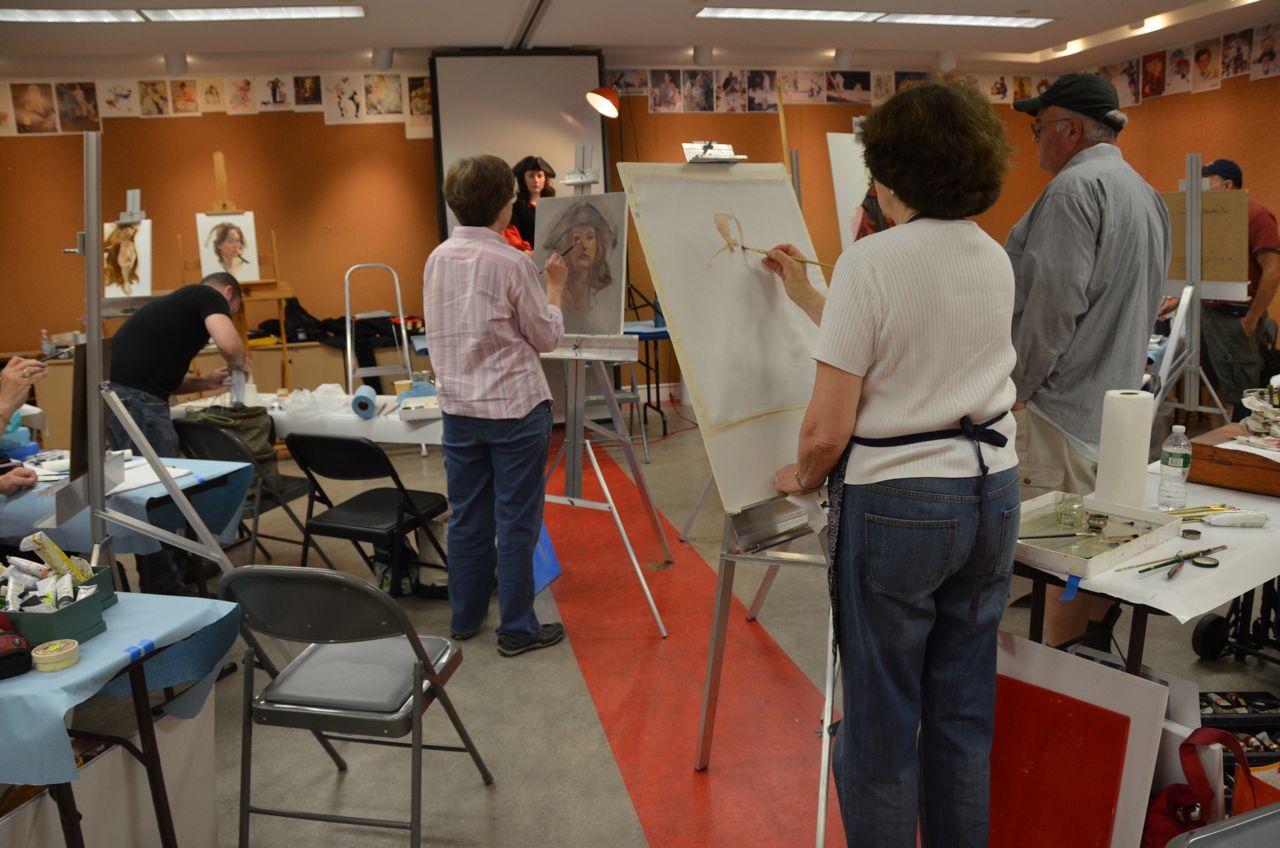
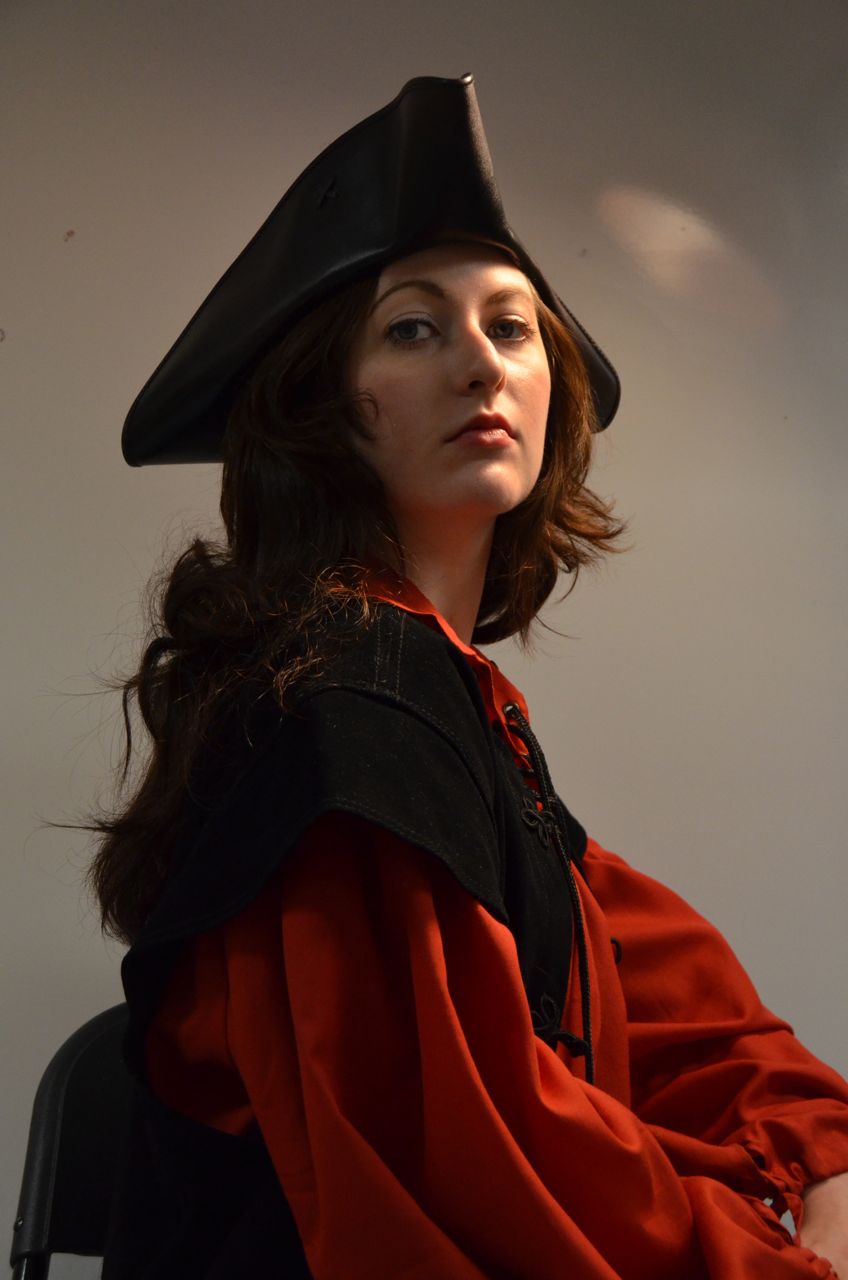
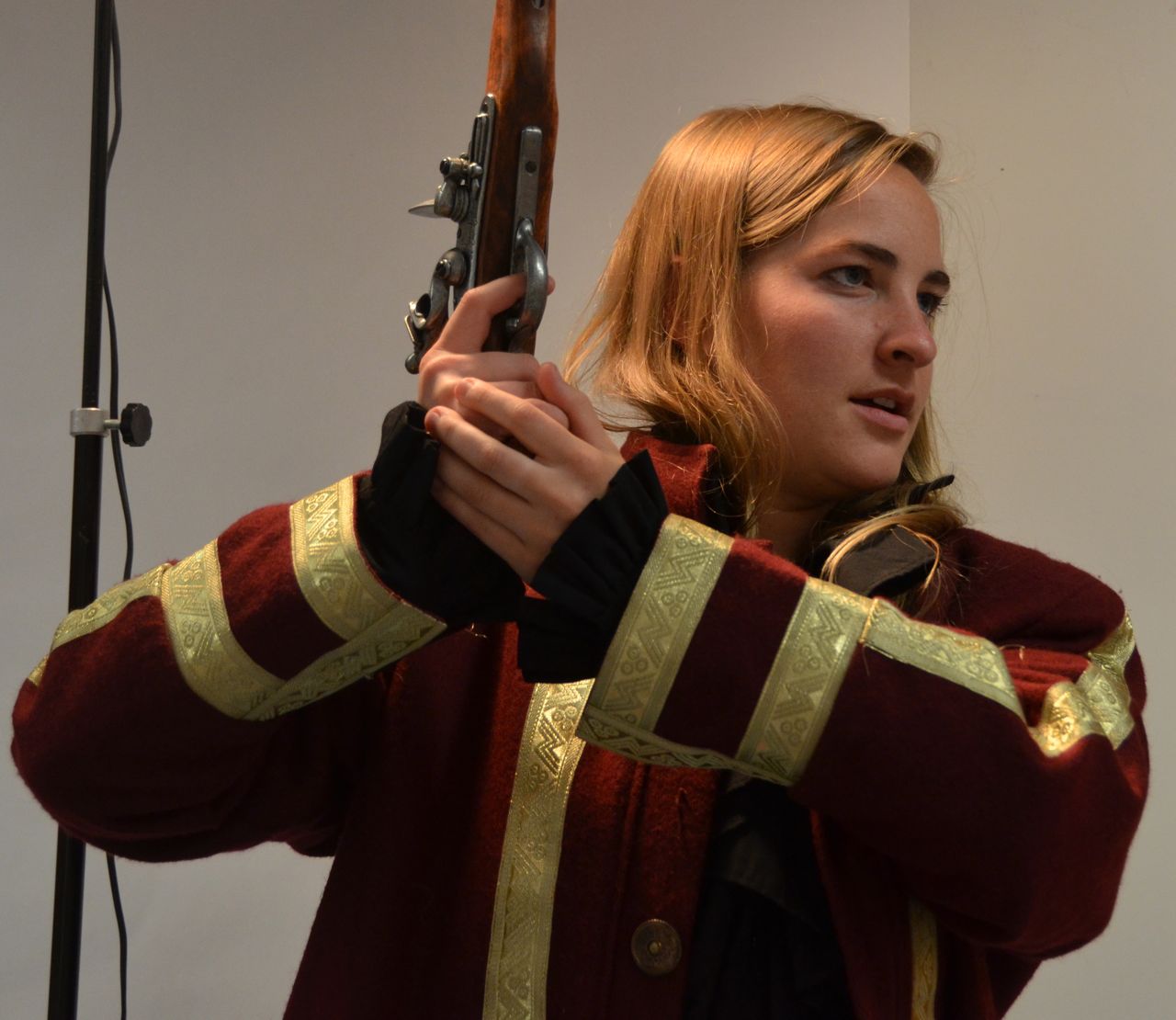
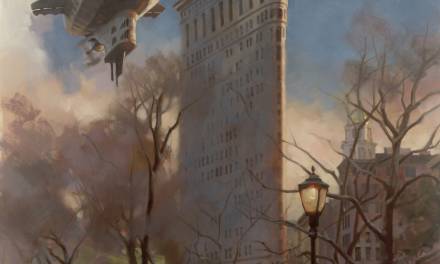
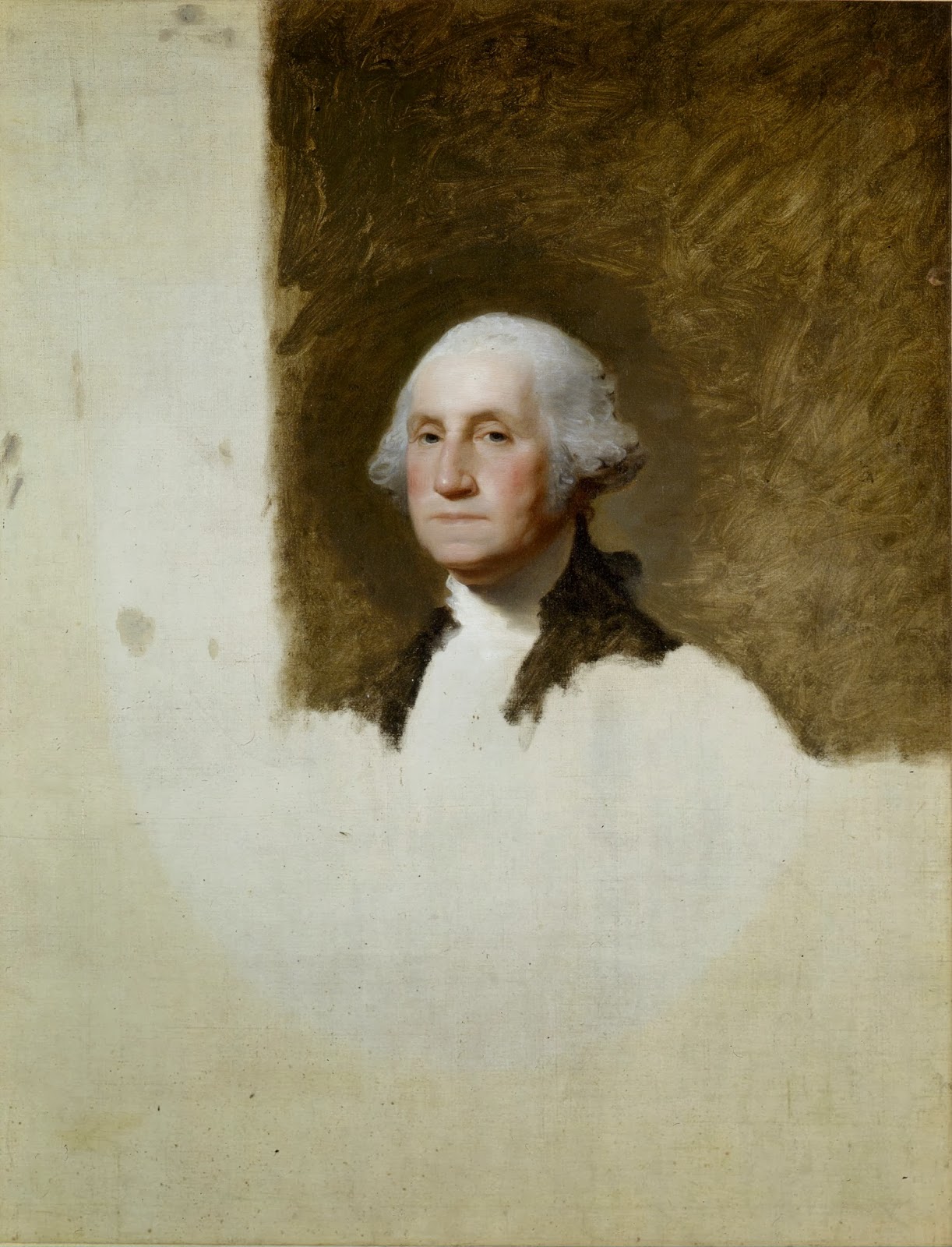
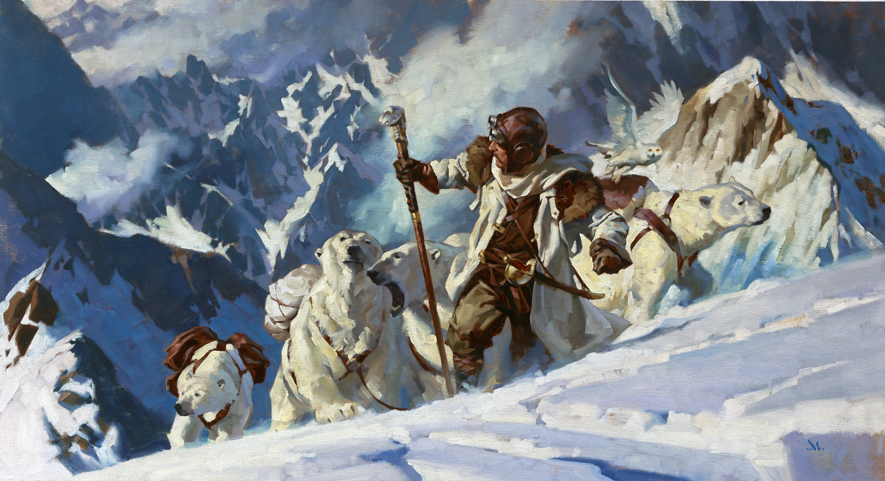
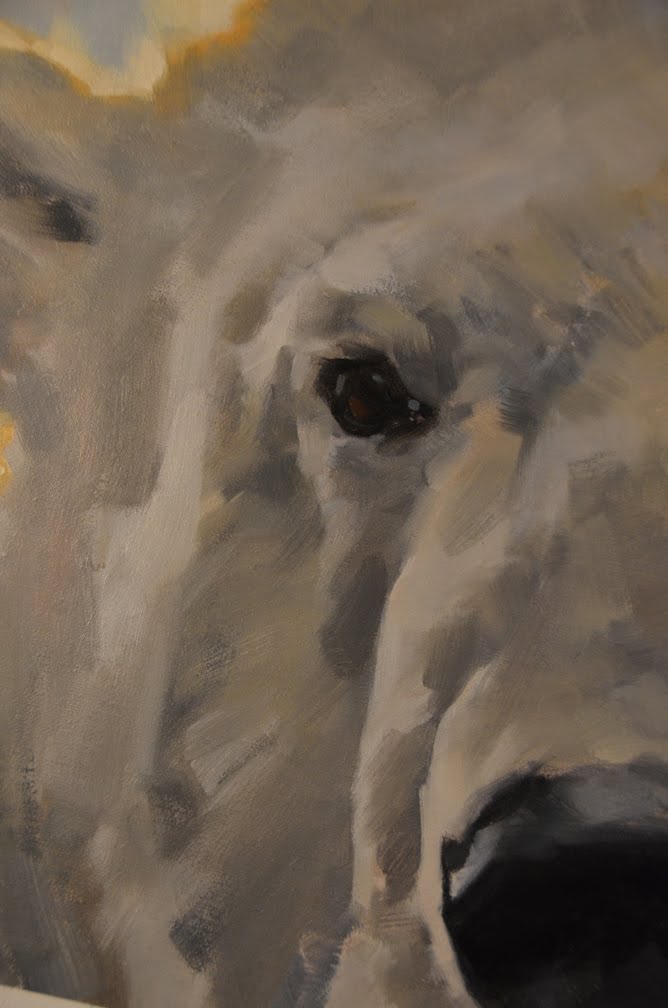

I remember you talking about how you wanted to do a Master-class on constructive tracing in your interview with the Sidebar guys. So I guess I can say this has been a long time coming, and I'm glad to see you've fleshed it out a bit more for us 😀 Thanks, Greg.
Great post, it is a very good lesson and really informative! Thank you!
I'm curious about the 10th thing you learned.
Great list… my students are usually resistant to adding this to their toolbox. It usually takes them a while of practicing to realize what is meant by drawing from your reference instead of tracing it.
Hmmph….smart guy…..
“Art is one field of endeavor where the ends justify the means.”
As usual a brilliant, honest and courageous post! Thank you!
Scott Eaton uses ecorche, which is basically anatomical tracing, for his anatomy course. Check out his site, here http://www.scott-eaton.com/?s=ecorche&x=0&y=0.
Hi Greg, Thanks for this list. Very timely.
Your class was great, I am very happy I decided to invest in taking it. I am also glad you took the time to walk around the Pyle show with us. To be able to see and hear your reaction to Pyles work, and to compare both yours and his methods of painting. So much to be inspired by paintings done by big brush as well as small ones.
I very much appreciate the way you taught the class. I was never self conscious about my painting abilities the whole week and was able to focus on improving and learning.
Also big Thank you for critiguing my Astronaut painting. I will be reworking aspects of it very soon.
Wish you all the best on your future work.
Thanks again,
Mike
Great post Greg- now you need a video how to on tracing!
my favorite point is #9- Nothing is cheating. It is all about the end product.
A perfect example to see this in action is the Robert McGinnis documentary with Bob doing a demo projecting his photo to make a painting. And what blew me away was how he drew from the photo! Gregs point #2 Yeah he traced parts but he also distorted the anatomy and used the photo as reference. He was not trying to make a copy of the photo. Worth checking out if you want to see how tracing is done right! The sexy lady is a bonus!
I learned anatomy at an early age; 10. I didn't draw from life or from photos but from…comic books. These were comic books from a generation *before* the stylized anatomy of Leifeld and Lee. I learned how the body's lines fit together by tracing John Buscema and Neil Adams.
You gain a certain 'muscle memory' when you trace something and I'd like to see tracing as a standard part of any anatomy class. By the time I was in High School, I was the best artist there and could draw from life quite easily; my mind already knew how the body fit together. In fact, because I had learned from the dynamic, yet anatomically correct, comic books, my drawings often had more life to them than the other artists around me.
Food for thought, perhaps.
I think it behooves artists to have a good grip on drawing before you start tracing, projecting and working from photograph. Using photographs extensively yields impressive results at first, but then it can become a crutch when you let the photos dictate where you go rather than let one's knowledge of perspective, anatomy, and your vision and personality lead the way.
“At this point in mankind’s search for Art, all is fair game.”
Genius! And so refreshing. Now, if everyone out there would just listen…
I don't know if I agree with this. I'm teaching my 7-year-old daughter to draw by starting her tracing various books (mostly wildlife art) and when she draws non-traced pictures the result is quite amazing. By tracing, she's unconsciously learning the correct lines…and this translates into better draftsmanship on all her drawings.
Of course, I am teaching her light, form, perspective (all at a simple level) but the tracing isn't proving to be a crutch for her at all. The important part is to do as Greg suggests and alternate between traced and non-traced artwork. It's a learning tool and not to be used exclusively.
Keep going with those astronaut ideas, Mike. I love 'em! As you know, I'm doing a series myself, so I'm kinda biased. : ) But stick out the awkward, not-sure-what-I'm-doing parts and just go. In time, you'll reach a stride and it'll overwhelm you with ideas and enthusiasm. Can't wait to see'em!
So glad you liked the workshop! And thanks for bringing your extra work…
Bob's AMAZINGLY GOOD. And such a great guy. Very approachable. I gotta check that out! Thanks, Matt!
You're dead on, Michael. I worked from comics like crazy. LOVED it. Sometimes I traced, and at the time, I thought this was cheating, so I would sit and meticulously copy the exact shape of the ink lines to match the comic lines. I didn't realize what kind of amazing training that was. I, too, was more accurate in anatomy compared to those around me who didn't. Years later, I shrugged off that typical purist attitude, and made great progress.
Thanks for explaining it further. It IS muscle memory….and brain memory: tracing trains the nerves by wrapping them in myelin sheathing. I'll talk more about this type of training in a subsequent post about focused training, deep practice, and talent myths.
Absolutely food for thought! Thanks!
Thanks for the counter thinking to this, Jason. It's a good comment! But one that most art schools perpetuate. And for good reason. Like you, they want the student to have a good solid base of understanding. But how do they get that when they don't even know how to approach it, and the schools don't know how to teach it?
That's precisely why Illustration has taken off in recent years. Students are demanding HOW to learn to draw. It's practical, and it works.
Overall, it's a process. Certainly a personal vision is always a goal, but most artists haven't that vision to start and need to build it. It's built through training. Coaxing that vision out is critical. Most students have no idea how to do that.
We are still suffering from lofty ideas of talent being some kind of elixir we're born with. I've helped many students by telling them to emulate those artists that appeal to them, because they have a vague feeling that they can't identify as to why they like a particular type of work. Once the stigma is taken away, they advance. The Japanese have a great saying: “Copy, copy, copy, create.”
It's a back and forth process. Ruling out photography isn't necessary. Even with photos, one still has to come into their own authentic approach.
It only becomes a crutch if you allow it.
Let's not conflate using photo reference with tracing the photo reference onto your canvas to paint over. The two are very different things. Anyone can trace a photo, but not anyone can draw from photo reference and make it look and feel right.
Scott Talevich
There are no hard and fast rules. I learned to draw from copying comics as well. And I had a pretty firm grasp of the logic of perspective and anatomy before I ever drew from life in college. I just sometimes see art where it's so obvious that the artist is drawing from a photo without question, without fixing errors or taking control. At 7 years old though, drawing should just be about fun.
Hi Greg,
I`m interested to find out what you think of tracing with regard to portrait paintings. It feels as if you`re kind of defeating the point if you trace for a portrait.
Max
I love you, Mr. Manchess.
For the technically challenged, could you please explain how to project the images for tracing? Thank you and thanks for this post. I do struggle with drawing and am glad to try a new technique to improve my skills.
Hello Gregory! Could you clarify something? Just so I understand this the right way: Are you recommending tracing over copying while someone is learning anatomy?
Thanks, you guys! All good questions to ask, but it's limiting us.
Again, these questions show how much the idea of 'cheating' has entered our language and understanding about drawing. “If the artist traced it, then he didn't try to draw it himself! This can only lead to whole generations of artists 'cheating' and forgetting how to draw!”
And yet, generations have traced and we haven't lost our ability to understand the difference. (Or have we?)
It's a training tool first, it's also a Time Machine. It saves me time.
I recently got an assignment to paint a portrait of Jimmy Carter. I used the reference they sent to project the photo onto paper where I redrew his face and added my own particular feeling to it. As the AD had a tight deadline, I didn't sit around for hours trying to “capture” his likeness but methodically measuring and calculating where the specific points of his likeness were lined up, etc. I've done this before. Many, many, many times. Everyday, in fact. And I know how to capture a head, and a likeness.
Because I trained to do this. Over and over and–oh yeah….over again.
What would be the point I'm defeating? If you want an accurate likeness, then accuracy is key. If you are going for an impression of a likeness, then fine, draw from observation. But it really shouldn't matter since, for this job, Jimmy Carter was not in my studio.
I have done many, many impressions of people. I've exaggerated likeness for comic effect, I've distorted likenesses for emotional effect. It's back and forth. It's 'both, and' not 'either, or.'
I'm not recommending one way over another, Robert…(good question though!)….I'm advocating that we use BOTH methods to train to be able to draw well. In any condition, at any time, anywhere. Draw from memory, draw from photos, draw from life. Point is: DRAW. Forget about what's right, what's wrong, what's best, what will “destroy your inner artist.” : )
Let's free ourselves from this limited thinking and get away from the so-called Purist Attitude about making pictures. Your training is about grasping ALL of it without holding back. Because it works. And it works really, really well.
Frankly, you can tell when someone hasn't spent enough time learning to draw. It's immediately evident. Whether they trace or not.
Keep 'em comin' guys……it's a really good conversation to have about all this!
Believe it or not, tracing paper goes back quite a while. Italian master Cennino Cennini (Il Libro dell'Arte 1437 ch. XXIII, XXIIII aka “The Craftsman's Handbook”) writes that tracing paper can be made by having vellum scraped so it “barely holds together” and can further be made transparent by rubbing linseed oil into it. He also mentions using the paper in nearly the exact same way as you mentioned. S0 if it was good enough for the Old Masters, it's good enough now. Andyvolpe.com
Hi Gregory,
Thanks for sharing and clearing this up. It`s really brought about a new way of seeing things.
max
Hi Gregory,
I do understand that tracing, while trying to input your own style into it is incredibly educational and can soon let you get used to really drawing well with the basics that you absorb while tracing. But as an art student myself, I'm wondering about certain factors.
-If you were given a freelance portrait job, and your client has mostly the generalized mindset of an artist (the purist version). Would you consider letting him know that you would have used a method of tracing but did incorporate your style?
-I would not have any problem with using tracing as a training tool, but when the time comes for a professional job, would you still consider using this method and treat it as part of the training? Or put the method aside and see the results of what you've done so far, by drawing, like you said, from memory?
Because i don't think artists label all tracing as cheating, but things only get touchy when the works that get exhibited, submitted, presented, sold or traded are traced work even if a certain amount of personal style is incorporated into it. (that's if we personally inform the client that it's done with abit of tracing.)
In these cases, how would the mindset work?
Thanks,
Killian
I knew I should not have expected to hear a definite “Yes” or “No”. Thanks for sharing your thoughts, again.
Really great question, Killian….and one that as students we are bound to have to deal with. Even professionals, up to a certain degree.
First thing to try to do as an intense, absorbing, smart student is to understand that the process of learning is difficult and time consuming, but doesn't need to be disheartening. The main factor is realizing that things don't come in formulas. Ideas don't come from a step 1, step 2, step 3 straight line of education. Embracing all of this will be your hard work to figure out and train with.
As an instructor, however, I do try to simplify the process as most teachers do, but in that simplification is danger: that the student will focus too much on a formula to succeed, when in fact, the main process is trial and error. Heavy on the error.
We learn from those mistakes. Irritating, I know. But I started at the same place as you, with lots of confusion. Just try to sort out the steps for your own approach, but you'll really need to take them all. Well, you should anyway.
Clients have always known that illustrators work from photography. Just a fact of business. You don't have to tell them your methods. Just impress them with your work.
Digital guys are tracing, drawing over, painting over, sampling, and stealing reference all the time. They work from photography a ton. But we don't seem to question that. Why so with drawing with your hand and mind?
The vast majority of artists working today will choke, stammer, and look away when you ask if they work from photos. It's time we just flat-out embraced it and let it go. Doesn't matter.
I hope you can let go of this taboo in your own education. You'll benefit from it, as long as you can be honest about when, where, and how it's best to use it. Don't worry so much. You will get flack for it, trust me, but let it go. Besides, the general populace has no idea how paintings are created. Even many fine art professionals.
For now, draw your fool head off, any way you can. It will make more sense down the road.
I'm starting to get students coming back now who have been in the field a while, who are telling me that the learning process is paying off for them. And they are getting it.
Sorry to be so long winded….but here's something to think about, too. When you paint really, REALLY well? NOBODY cares how you got there.
LOVE hearing that, Max! It's all about that, isn't it….
Hah! That's EXACTLY it, Robert. Not an either/or proposition. It's just never that simple. If it was, how many people do you think would have been in line before us??
Yeah, ALL of them….: )
That's cool, Andy! Thanks so much for that!
I see the book you highlighted. Is the info available on the web?
Not exactly, Jason. There are plenty hard and fast rules. Hardly rules really, but principles. Principles for value, light, line, depth, perspective, shape, silhouette, cropping, staging, photography, costumes, folds, shadows….to name a few. : )
Yep, drawing should be fun when we are little….and usually it is. But then, we're not sure exactly why yet, we rinse that enthusiasm out of 'em.
You and I are only talking because neither one of us, and the others contributing to and reading this blog, took 'no' for an answer. We wanted this stuff. No question.
Jason, excellent point about drawing being about fun. That's why I'm showing my daughter how to trace and draw from wildlife (she loves animals). Drawing a subject that she loves is crucial and, really, light hits all forms the same so all the basics can be taught from wildlife as well as from any other subject matter.
The other aspects of art (value, composition and perspective) I teach by making a game out of it. Example: we play a game where we look at an object and try to find how many different values are in it. At her age it's all about teaching her to see.
But the tracing is a crucial part of it (and she enjoys it too).
Greg. Man you are full of inspiration and words of wisdom!!! I have never heard is said so well and so clearly.
“the main process is trial and error. Heavy on the error.
We learn from those mistakes. Irritating, I know. But I started at the same place as you, with lots of confusion. Just try to sort out the steps for your own approach, but you'll really need to take them all. Well, you should anyway.”
I think you have a 2nd carrer starting here with Motivational Speaker for artist!
Surprised you didn't know about the McGinnis Doc. worth checking out:
http://www.amazon.com/Robert-McGinnis-Painting-Last-Summer/dp/B00261WSRE
there is supposted to be another video of him just painting but it is not out yet.
Thanks, Matt…..after many years, you can see patterns evolve. I'm also still very disgruntled about my very first day at art school, signing up for classes: “Painting and drawing are dead. We don't teach that any more.” And they were DEAD SERIOUS. They thought we'd reached the apex of drawing and painting and could NOT see any other path other than conceptual fluff. Ideas were all we had left, according to them.
And I've railed against that ever since, because, y'know, they were instantly taking away my dream to paint. Besides, as humans, we abound in ideas. It's the effort to see them through that's the tough part.
I will continue to smack down that attitude whenever I hear it.
….and thanks for the McGinnis link, too!
Gregory, I wanted to thank you for this post.
I remember being so frusturated that I couldn't produce quality art as a beginning drawer. I tried anything to make my drawings better and it wasn't until I heavily used tracing, that my under-painting drawings improved drastically.
Tracing is NECISSARY in learning. We've all done it and I agree with number 9- Nothing is Cheating. Quality is given to a piece of art because of what we see in the end result, not in the means of getting there.
Thanks again Gregory, for inspiring us and unveiling the truth as always
Excellent post Greg. I have got to say that tracing or projection or drawing from photos or whatever you want to call it is an extremely useful if not essential tool in training and process for illustrators who strive for realism in their work, especially if you want to work quickly. I can't even begin to list the great illustrators who work with some form of this….has anyone ever seen a Drew Struzan poster? Like you said Greg, make it look great and it doesn't matter how you got there.
Absolutely awesome Gregory! You have provided such a breath of fresh air with this post. I too remember (and still listen to) that terrific interview you gave on Sidebar, where you mentioned the importance of tracing and how you would like to teach about it's uses.
My training is in graphic design however I'm renewing my passion for illustration, so to hear opinions like this from people such as yourself really helps me to find the right groove when drawing/learning/practising, etc.
I guess when you boil it all down what matters most is that you understand WHY you are tracing and how it helps you, rather than it being something you should avoid.
I love the lists, looking forward to the next one. Cheers and thanks again.
Sure thing! Cennini's book might be up on GoogleBooks. But you should be able to find a copy of the Thompson (English) translation from Dover Publications just about anywhere, and inexpensively. -ANDY
Man this is the truth if I ever heard it. I will admit before, when I read the title I thought, “this was gonna be another shame on you for… or possibly a 10 reasons why you dont use tracing post, but man was I wrong. Because I have always had a thing about tracing photos for use in a picture. I thought, like a lot of others, that I was cheating myself and lying to people who saw it whenever I traced any part of one of my drawings. After reading this and having a pro finally say that its ok and that everyone uses it as a tool for developing speed and accuracy it takes a lot of that shame off of me. Thanks Greg this has made me feel so much better about using traced drawings in my art. You are a good teacher because I feel like I truly learned something after reading this post, as well as inspiring me to use that knowledge to better hone my craft. Thanks man I really Appreciate it.
Cheers
Definitely is. Every one of your posts on Muddy Colors has changed my view on illustration and painting in some way or another.
I`m attending the workshop in Nov in Seattle and I`m really looking forward to meeting you in person
max
Amazing man! I did one sketch from the first pirate girl at work… With bic pen,
You have made me see that copying is good while you are changing somethings on your own way.
Great post…If famous artists like Gerhardt Richter and Andy Warhol are allowed to get rich tracing, surely us lowly illustrators can have a go too! 😉
This post is full of so much awesome. Thanks so much for taking the time to write it all out!
Great post. When I was in art school our teacher insisted we trace and copy to get the hang of it and loosen up.Also I believe that some of the Master painters used the Camera Obscura.
Thanks for sharing.
I think that tracing is only “cheating” if the artist is:
1) Is lying to everyone and saying, “Oh yeah, I freehanded that” (when they traced it). Why lie? Why the shame? Is it to fool others into thinking that they have skills (accurate freehand drawing) when they don't really have them? If that's what's going on, that is cheating.
2) Maybe not “cheating,” but if they can't draw anything freehand and rely on tracing 100% of the time, there's something wrong there. I saw a lot of these types in art school.
I am one of those annoying purists who doesn't trace, but I thought all the points about tracing (as applied here) sounded fine. Great, actually. If it helps someone draw better, it's awesome. Switching back and forth between tracing and drawing proves that the artist is not “stuck” in the “tracing-as-crutch” rut. So even as an irritating purist, I can find no fault with it. Because whatever one does, it should be about building skills, improving, expanding. And if there's a way that tracing can do that, then it has to be good!
I've seen artists reliant on tracing who were stumped (and humbled) when expected to draw from life. They can't do it and they feel bad. That is not what tracing should do to people. If it does, they're doing something wrong. Unfortunately I find a lot of artists tracing to compensate for skills they don't have, and clearly are not working on developing. (In other words, they're stagnating and the tracing isn't helping their skills improve.)
But that's not what we're talking about here! 🙂
Not everything evolves in the same speed, Is it fair to your right arm if you slow down your weight-lifting so the left arm can catch on? People have a strange idea of “art package” meaning you learn everything at the same time and pace, it's not true.
Forcing your “mental image database”, your muscular memory, your anatomy knowledge and everything else to “wait” till your eye-to-hand coordination catches up is a cruel waste of time.
So, I wholeheartedly agree with this post.
I find tracing to be fascinating as a practice specially if you allow yourself to “not trace” while tracing, meaning go a little wild, trace the big shapes but do the smaller ones by your own. Or trace some parts and try to eye the others.
This is one of the most informative articles I have read about art and art production in a really long time. As a high school art teacher, there are things here that I needed to see. Thanks for having this conversation.
Steve Cozart
I say do whatever makes you feel best about yourself. Is tracing for a final image wrong? No. Does it make me less impressed with their artistic output when I know they traced it rather than struggled through working freehand? Yes. That's just the way it is. One way requires more skill than the other.
Personally, I prefer to draw freehand and fix any proportion problems manually after the fact. Is it slower and therefore less profitable? Yes. Does it put me at a disadvantage versus artists who do trace? Probably. Does it make me feel better about myself and my final images? Yes. That's the trade-off, I suppose.
This is one of the best art blogs I've ever read–kudos to you, Greg, for saying it like it is and illuminating artists to the value of tracing. I've always known that illustrators are some of the most astute artists ever and you've certainly proved that in this insightful blog entry.
This article is a keeper!
I completely concur–most of learning to draw is just that—-learning patterns and dare I say it, “formulas” , but this is the truth and the artist who can learn such patterns has the potential for great improvisation–but that last step is reserved for those who go through all the pattern and formula building in their visual and motor memory.
Thanks again, you guys! So glad you understand what I'm saying here. You're all taking it in and appear to be energized to get that much better, no matter if you're tracing….you're drawing!
Fantastic. Makes ME feel supported as well.
Go! Go! Go!
G
Marshall Arisman recently put out a dvd with American Artist. What a riot, this Cat dives into his work. On the subject of tracing he shrugged, grinned, and stated “Vermeer traced, Rockwell traced, means to and end, if tracing was the answer, you'd be a Vermeer or a Rockwell, you're not.”
Hey there,
Thank you for the amazing post!You know, as a comic book artist I can tell you that in comics is even worse!Even more stereotypes and mis conceptions: at least in the illustration field you CAN use photorefs, it is “allowed”.
In comics is a taboo, and I don't know why! you have to come up with all the thing drawn straight from your head otherwise is not comics, otherwise is cheating:plenty of forums where supposed fans destroy the artist because they found they found the reference the artist used…no need for more comment.Artists themselves make pride of themselves claiming they do not use references at all.
So you can consider yourselves much more lucky than some poor comic book artist that has the guts to say they use references(btw when I say “using references” I do not refer to “tracing” but to use it to see how the real thing works.When they admit they trace…well you can imagine).
Everybody…but one.
Neal Adams.
He trace.
He traced all the the time during his work on the “Ben Casey Strip”: four years of tracing.
(continue in the following post)
Here is what I found about tracing from the man himself:
“there is a huge debate on whether its ethical to trace area over photographic reference
here's neal adam take on this topic
here's neal adams in response to being asked about his thoughts/experiences with tracing, lightboxing, etc…
Dear David,
You may pass this on for me.
As far as becoming a realistic artist is concerned and having the freedom to advance in your career in any direction yoou choose, if you do not spend a significant, really significant amount of time tracing photographs you might as well “shoot yourself in the arm.” The same goes for an artist who refuses to study anatomy (and there are many of those) or perspective (and there are many of those.)
I look reuglarly at artist's work, even pros who's anatomy studies stopped at lesson B, perspective studies stopped at two point perspective and straight perspective lines and never learned that nothing in perspective is BASED on straight lines.
Not to trace photographs is not to learn. Not tracing photos is anti-intelectual. Not tracing photos leads to life-long bad habits and earns no respect from accomplished artists.
Buffoons, who know nothing about art will chide and tease “artists who trace” in INGNORANCE, but remember this, “listening to ignorant people makes you ignorant.”
Unless you, as a young artist, think you have some sort of addictive personality and if you study anatomy you will draw anatomy studies all your life and if you study perspective you will do perspective studies all your life, you may, no one knows, become an accomplished architectural artist or scenic designer or such. You may become a medical illustrator, or if you trace photos you may become a great illustrator, or if you trace photos you may become a great comic book artist. You can even become one without it.
Your chances are simply less when you turn your back on skills. If you don't carry a sketchbook, and use it; if you don't go to life drawing classes; if you don't spend time tracing; studying anatomy, perspective, light and shade, positive and negative space, design and composition, etc. you will never know your real potential.
If you listen to buffoons you will learn less. It is a simply equation. You are learning for YOU. Not to satisfy some smartass comment from your associates, and if you put asside ANY tool, ANY, because of them, you are made less by it.
Let them hoot. You abilities, like a young bird, are yours to free, will they fly, or crash to the ground because you fell prey to an ignorant word?
Cheers,
-Neal ”
you can found this letter here : http://forums.hobbyhype.com/showthread.php?t=1272
there are many others interview where Neal publicly refers to tracing as the most invaluable tool during the training process and the working process.(Just type neal adams tracing photographs interview)
The fun thing is that NO ONE made forums or posts to blame Neal Adams claiming they won't buy his stuff anymore because he traces photo.
NO one artist blames him for that!Instead when asked to give some advices to younger artist the same artist says to look at the classic artist as J.Buscema and N. adams to see how a real body works..
Note to Greg: can't wait to see how you integrates deep practice theory into drawing.When I read the word “myelin” in you comment, a bell rang…it woudl be useful to think about exercises to learn and master some particular aspects of the illustration making process through the principles of deep practice.
Hope this(long) post be enlighten and not too boring.
Best
Massimiliano
To be fair- we never really covered constructive tracing in any Illustration (or foundation) classes thus far. I know I've never really bothered with it due to the general stigma surrounding it, not to mention the occasional classmate who becomes dependent on doing so.
Bullshit.
Greg, thank you for this great information. I never connected tracing with muscle memory. Learning to draw from imagination has seemed a huculean task but I get it now. My question is this: everyone talks about photos distorting and I know about lights and darks and colors not being accurate. I can also see obvious distortions with close ups and foreshortening. What else am I missing? Are there other issues you can share with photos and innacuracies that I'm not understanding? Thank you as always for being a great teacher.